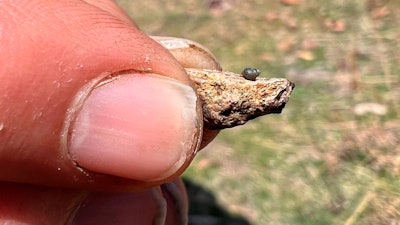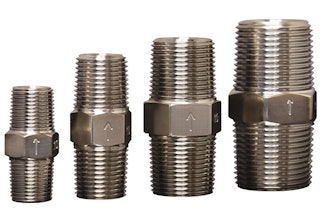
RENO, Nev. (AP) — Conservationists are seeking Endangered Species Act protection for a tiny snail half the size of a pea that is known to exist only in high-desert springs near a huge lithium mine planned in Nevada along the Oregon state line.
The Western Watersheds Project filed the listing petition last week with the U.S. Fish and Wildlife Service for the Kings River pyrg, a springsnail found in 13 isolated springs around Thacker Pass 200 miles (321 kilometers) northeast of Reno.
It says the biggest threat to the snail’s survival is disruption of groundwater flows as a result of the 370-foot-deep (113-meter), open-pit mine that the Bureau of Land Management approved last year and is currently being challenged in U.S. District Court in Reno.
Other threats to the snail's survival include livestock grazing, road construction and climate change, the petition said.
“Federal land managers put this aquatic snail in the crosshairs of extinction by hastily approving large-scale lithium mining at Thacker Pass,” said Erik Molvar, executive director of the Idaho-based group.
Ramped-up domestic production of lithium is key to President Joe Biden’s blueprint for a greener future, a critical element for electric vehicle batteries. Worldwide demand for lithium is projected to increase six-fold by 2030 compared with 2020.
Molvar, a wildlife biologist, agrees the nation must “transition from the dirty fossil fuels that are responsible for climate change" but not by mining in sensitive habitats.
“We have a responsibility as a society to avoid wreaking ecological havoc as we shift to renewable technologies.” he said.
The snail's shell is less than 2-millimeters (.08-inch) tall, according to the petition, which notes by comparison a U.S. nickel coin is 1.95 mm thick.
They have survived in isolated springs, which are remnants of extensive waterways that have covered what is now dry land only to recede many times over the last 2 million years, the petition said.
Groundwater pumping associated with the mine will reduce or eliminate flows to the springs that support the snails, it says.
The lawsuit challenging Lithium Americas' project was filed by a Nevada rancher Feb. 11, 2021 and later joined by area tribes and conservation groups, including Western Watersheds Project. It alleged the mining would violate federal protections of numerous species, including threatened Lahontan cutthroat trout and imperiled sage grouse.
It also maintains the project would destroy lands sacred to tribal members who say dozens of their ancestors were slaughtered there by the U.S. Calvary in 1865, although a judge has ruled twice preliminarily that they have failed to prove it's the same location.
Lithium Americas and the Bureau of Land Management maintain none of the springs would suffer impacts affecting the snails — and that claims to the contrary were based on a misapplication of groundwater models, submitted after the government's environmental review was completed.
“Lithium Nevada has done extensive work to design a project that avoids impacts to the springs, which are more than a mile away from the facility site," said Tim Crowley, a Reno spokesman for the Canada-based Lithium Americas.
“Our project is purposely located to not effect local springs and is based on years of data collection, rigorous environmental impact studies, regulatory and public review, engagement with stakeholders, and final approval by the federal authorities,” he said in an email Monday.
BLM said in August court filings that the final environmental impact statement noted the snail was detected during baseline surveys of some of 56 sites surrounding the project but none was "detected within the direct footprint of the project or any area likely to be adversely affected by the project."
Molvar said Monday three springs are within a 1-mile-buffer zone (1.6 km) the bureau established in its review of potential impacts of a 10-foot (3-meter) drawdown of the groundwater table and the rest are less than 4 miles (4.8 km) away. He said that drawdown is an arbitrary metric and that a drop as little as a foot could adversely impact snails several, or even dozens of miles away.
He said the snails were imperiled even before any new mining was contemplated.
“We’re down to a very few, tiny little habitats in only 13 springs so we can’t afford to lose a single population,” Molvar said.






















